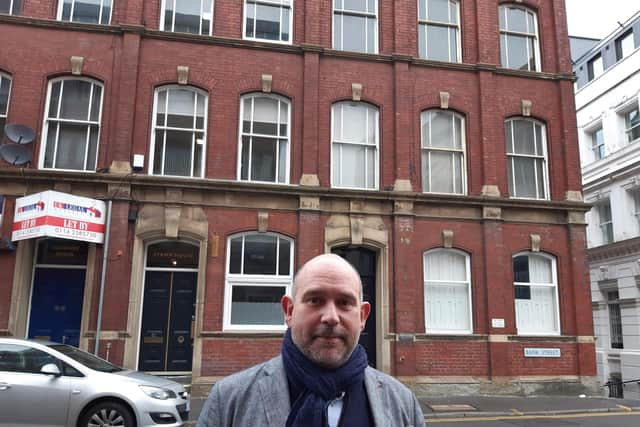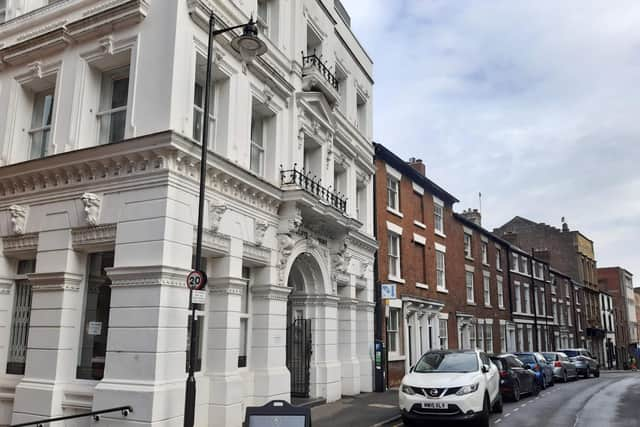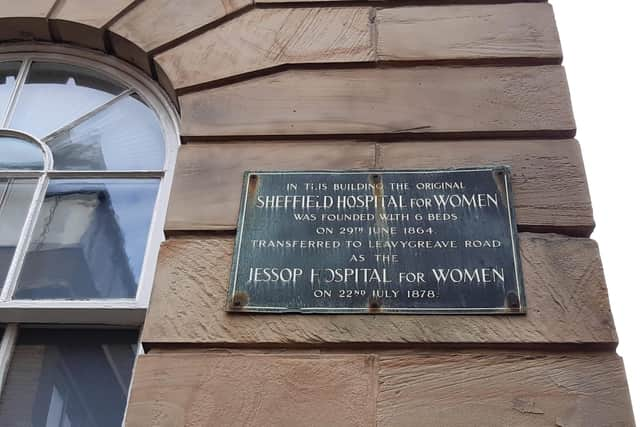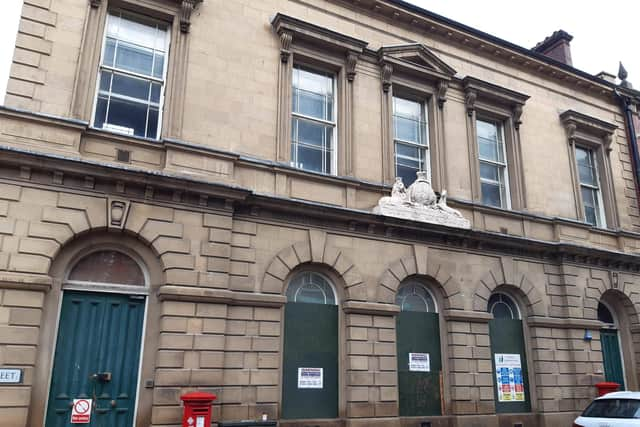Restorations - Rapid changes on Sheffield's historic Bank Street in city's cathedral quarter
and live on Freeview channel 276
For 200 years, right up to the 1990s, Bank Street and Queen Street - the road changes name half way along - were the city’s historic commercial heart.
Then, in a few short years, almost all the ‘Chambers’ and listed historic buildings were converted into flats. Firms moved out to modern offices and thousand of residents moved in. And a once bustling street fell quiet.


Advertisement
Hide AdAdvertisement
Hide AdToday, companies are a rarity and the new usage is revealed by multiple doorbells and letter boxes and pot plants on windowsills.
The process continues with North Church Business Centre - which is empty - advertising itself for sale with planning permission for student flats.
There is one exception.
BUSINESS NEWS: Food entrepreneur opens up on future of three venues


In spring, Tim Bottrill and David Baldwin bought the old post office at number 52, which is sandwiched between apartments.
Resisting all temptation they turned it into five offices and called it Stamp House, retaining many original features.
Advertisement
Hide AdAdvertisement
Hide AdFor years the premises had served the businesses nearby. Known as the ‘secret post office’ by many, it never had queues, unlike its counterparts elsewhere in the city centre.
BUSINESS NEWS: No bids for Old Town Hall


But when the companies left, trade dropped and it eventually closed.
Tim, a longstanding commercial agent, believed there was a gap in the market for ‘really good little offices’.
He said: “About ten to 15 years ago the cathedral quarter started to suffer. Areas have to go down before they come back up.
Advertisement
Hide AdAdvertisement
Hide Ad“This is now a more cosmopolitan area with living and working. People are buying old offices that have been empty for a few years and bringing them back to life.


“There are a lot of Victorian chambers and it has beautiful old streetscapes. It’s a peaceful part of town but it links with everywhere - the city centre, Castlegate, Kelham.”
Landscape architecture firm Urban Wilderness has moved into Stamp House. The seven-strong company had been in a smaller space nearby before working from home for a year-and-a-half.
Technical director Steve Frazer said they wanted something larger and permanent.
Advertisement
Hide AdAdvertisement
Hide AdHe said: “It’s characterful, we enjoy the city vibe and it’s convenient for everyone who works here.”
The firm designed and installed a wall of plants at Hunters Bar Junior school to absorb air pollution and, on the back of that, has just done another at Intake Primary, in partnership with other companies.
In a strong sign of the street’s resurgence, the old Three Cranes pub has just been converted into boutique hotel with a designer interior.


For decades it was a busy traditional boozer but trade declined as businesses moved away and it eventually closed. Last month, it reopened as a 14-bed boutique hotel with a pub on the ground floor.
Advertisement
Hide AdAdvertisement
Hide AdAgent Martin Nicholson, who sold it to Paul Hibbard and Peter Clifton, said he had interest from people wanting to turn it into student flats.
But Paul and Peter had the best ‘offer in the round’ because ‘when so many pubs have closed for good some people are trying to save them’.
In the area, signs above doors still speak of former uses.
On Fig Tree Lane stands the former Sheffield Hospital for Women, which opened in 1864 with six beds. It is now flats, as are Victoria Chambers and Haxworth Chambers on the same road.
BUSINESS NEWS: Dream council pensions criticised
On Bank Street, Queen Street Chambers and Queens Buildings, and 93 and the art deco 95, are all flats.
Advertisement
Hide AdAdvertisement
Hide AdThe listed former Sheffield County Court, built in 1854, is being converted into accommodation. The white and ornate Wharncliffe House is a coffee shop, with a business in the basement and flats in upper floors.
Some businesses remain in the older, smaller buildings towards Castlegate. Many of them are listed, including 26, 28, 30, 40 and 42.
But the larger more modern offices on Queen Street have been converted, including the former A4e offices and those opposite, which are now flats. Only Weston Tower stands derelict.
Bank Street is the next road down the hill from Campo Lane, which runs behind Sheffield Cathedral.
Advertisement
Hide AdAdvertisement
Hide AdIn 2014, John Clark and Karen Harvey, of Bank Street Arts, wrote a history.
It states: “At the turn of the eighteenth century, with a population of only 3,500, Sheffield was smaller than Leicester, Coventry and Worcester.
“By 1750 the population had more than trebled (reaching 12,000), outstripping the speed of growth in all of those towns. The new northern manufacturing towns were changing the face of the English landscape, and Sheffield was, by any measure, an important player in this.”
To the north of the city, developers began to clear the many timber buildings, small metal workshops and open land and a network roads was developed at the very end of the eighteenth century. This included Bank Street.
Advertisement
Hide AdAdvertisement
Hide AdThe first building was erected in 1784. A document from 1791 lays out the transfer of land from owner John Shore to John Eadon and William Taylor.
It was a ‘part of a certain orchard or garden’ at ‘Irish Cross’ – the plot which is now 40-42 and 40a Bank Street.
It was between two other plots of land in the same orchard which were leased to other men and bounded to the north and south by land owned by Shore.
He was parcelling up his orchard for sale and establishing a new street in the process. The deeds describe the street as Shore Street, named after the owner: John Shore, a banker.
Advertisement
Hide AdAdvertisement
Hide AdWithin a short time, the alternative name of ‘Bank Street’ was in use.
BUSINESS NEWS: Sheffield firm denies furlough fraud
To continue holding the powerful to account and giving people a voice, The Star needs you to subscribe, please.
Comment Guidelines
National World encourages reader discussion on our stories. User feedback, insights and back-and-forth exchanges add a rich layer of context to reporting. Please review our Community Guidelines before commenting.
